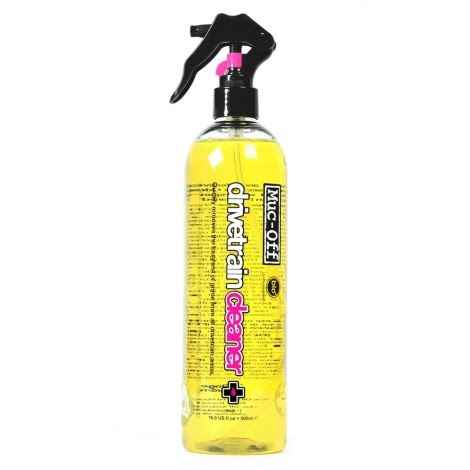Your bike chain is one of the most important parts of your bike, it is probably the part that works the hardest when going out for a ride since it’s transferring the energy from your legs to your rear wheel. Therefore looking after it and keeping it in good working condition is essential.
Typical chain cleaning tools
Here are some biodegradable products and chemicals for cleaning the chain:
There are varying strength degreasers however bikes don’t need the most invasive, getting a strong degreaser can damage coatings on your frame, and will cause bearings to wear prematurely if the degreaser gets inside. Strong degreasers can be harmful to breath and touch. The cleaners and degreasers shown here are strong enough to get the job done but are also safe enough for you and your bike to handle.
 |
 |
- Cleaning the chain with some degreaser and a rag helps remove dirt. Dirty chains wear more quickly.

- Use a brush to remove dirt more effectively. After cleaning, rinse off any degreaser, use water. A high pressure jet is not necessary.

This video shows this process clearly: https://www.youtube.com/watch?v=MuwS_nSevy4
How to check if your chain for wear?
A worn chain will wear your cassette and your chainring quicker, so in order to increase the life of your transmission, it is essential to regularly clean the chain and check for wear.
- A chain tester tool helps work out how much the chain has stretched. The tools can indicate the wear of your chain. Make sure you get the correct one for your setup.
- Anything at or beyond the 0.75 percent reading means that you should change your chain immediately. If you are using a chain designed for ten or fewer gears, replace your chain as it nears the 0.75 percent mark. If you are using an eleven or twelve speed chain, replace your chain once it has reached 0.5 percent wear. For two-sprocket or single speed bikes, replace your chain as it reaches the 1.0 percent wear mark.

- Gently fix one end of the tool and let the opposite end drop (without forcing it) into the chain to see how far it goes into the link. If the chain is new, it will look something like this

- Is one end of the gauge completely hidden inside the link? Is the tool parallel to the chain? In that case, it is time to change the chain for a new one.

This video shows how to use the tool: https://www.youtube.com/watch?v=FzyRCcjRuu0


